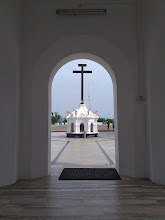Long ago, in the crisp winter of 1857, a man named James Lord Pierpont penned a tune that would echo through the ages. At the time, it bore the title "One Horse Open Sleigh," a lively melody inspired not by yuletide celebrations but by the thrill of sleigh races in Medford, Massachusetts. In those days, sleigh riders often tied jingle bells to their horses and sleighs—not for decoration, but for safety. The cheerful jingling alerted others to the sleigh's approach, especially in the snowy hush of winter when visibility was low. This simple precaution became the heartbeat of Pierpont’s joyous song, capturing the spirit of dashing through the snow.
The song made its debut at Boston's Ordway Hall, performed by Johnny Pell and the spirited Ordway's Aeolians. Though not originally written with Christmas in mind, it began its journey into history. In 1889, banjo player Will Lyle recorded it on an Edison cylinder, making it one of the earliest examples of recorded music. Unfortunately, that version is lost to time, but an early vocal rendition titled "Sleighride Party" survives, a testament to the song’s enduring charm.
In the decades that followed, "One Horse Open Sleigh" began to drift into the arms of the holiday season. By the 20th century, with the rise of phonograph records and radio, its merry tune found a home in the hearts of Christmas revelers. A pivotal moment came in 1943, when Bing Crosby and the Andrews Sisters released their rendition, sealing its fate as a timeless Christmas classic.
What began as a practical tool for sleigh rides, jingling to keep the snowy roads safe, transformed over time into a melody synonymous with the holiday spirit. From snowy sleigh rides in Massachusetts to carolers around the globe, "Jingle Bells" has jingled its way into the hearts of millions, a festive anthem of joy and cheer.
PS:
Sourced with permission.

















